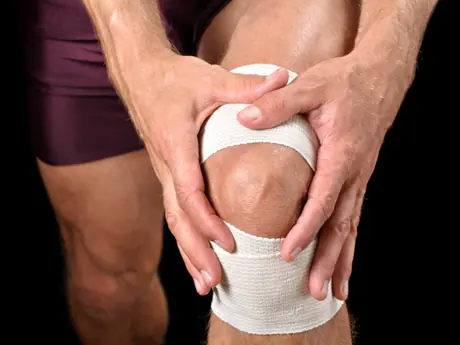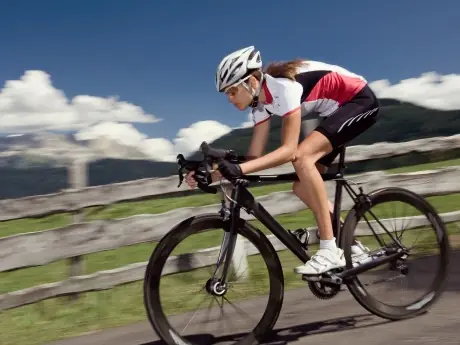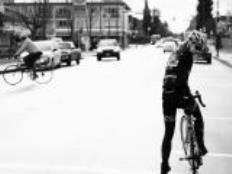
Triathlon: the sport with built in cross training. All that variety should keep joints, muscles and tendons healthy right? Unfortunately, the yards, miles and intervals of triathlon training can still add up to overuse injuries, despite the mix of swimming, cycling and running.
While many endurance athletes are prone to pushing through the discomfort, training through an overuse injury can ultimately harm performance in the long run as pace and high-intensity exercise is usually hindered. Here's what you need to know about kneecap pain.
More: 4 Ways to Fix Anterior Knee Pain From Cycling
The Basics
One of the most common overuse injuries in endurance sports is patellofemoral (kneecap) pain, striking 36 percent of professional cyclists and comprising 20 percent of all running injuries. The patella connects the quad to the lower leg via the patellar tendon and can be subject to forces up to five times bodyweight during running and jumping.
The pain is the result of either inflammation around the patella's protective cartilage or irritation of the underlying bone and is usually not due to osteoarthritis. Improper "tracking" or movement of the patella in its groove can lead to excessive pressure on one part of the kneecap (usually the outside or lateral portion) causing pain.
More: 4 Core Exercises to Cure Back and Knee Pain
Recognize It, Act On It, Heal It
While kneecap pain can be transient, ignoring the pain can often trigger more serious injury. As with all overuse injuries, too much, too often and too fast can overload muscles, tendons and joints.
Inherent biomechanical factors like flat feet, "knock-knees" and muscle weakness of the quads or hips can also lead to or exacerbate the problem. Kneecap pain is typically worse after a workout and can progress to the point it is painful on stairs and after sitting.
So how do you keep patella pain at bay? Cancel your 2014-racing calendar at the first hint of minor kneecap pain? Thankfully, the beauty of triathlon is that when overuse injury derails one discipline, training in at least one of the others is not. This form of active rest can be used to maintain conditioning while addressing the issues that led to the overuse injury.
Weakness in the glute and hip rotators has been cited as a causative factor in developing kneecap pain. Deficiency in these muscles leads to excessive inward movement and rotation of the knee when the foot strikes the ground during the running stride. This "knock-kneed" position increases the stress on the outside portion of the kneecap and can lead to the development of patella pain.
In a similar fashion, the quad muscles direct attachment to the patella leave them responsible for both proper tracking and for absorbing the stress of impact. In fact, a 2012 review of risk factors for patellar pain in the journal Sports Health found that lack of quad strength was a predictive factor for the development of patella pain.
- 1
- of
- 2










Discuss This Article